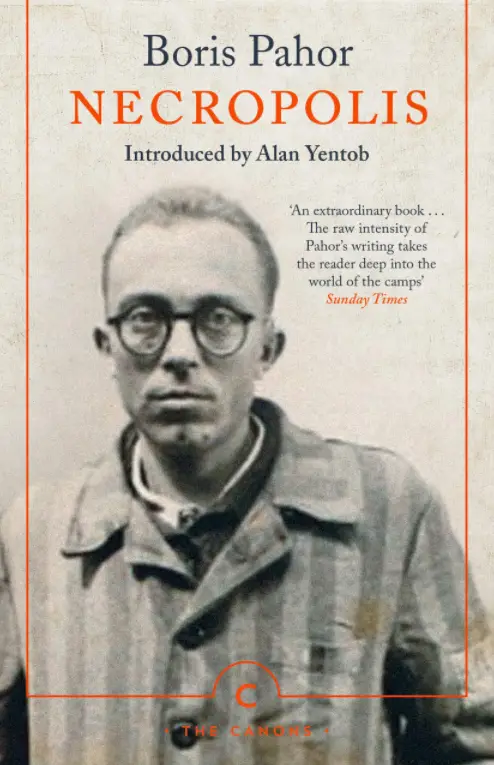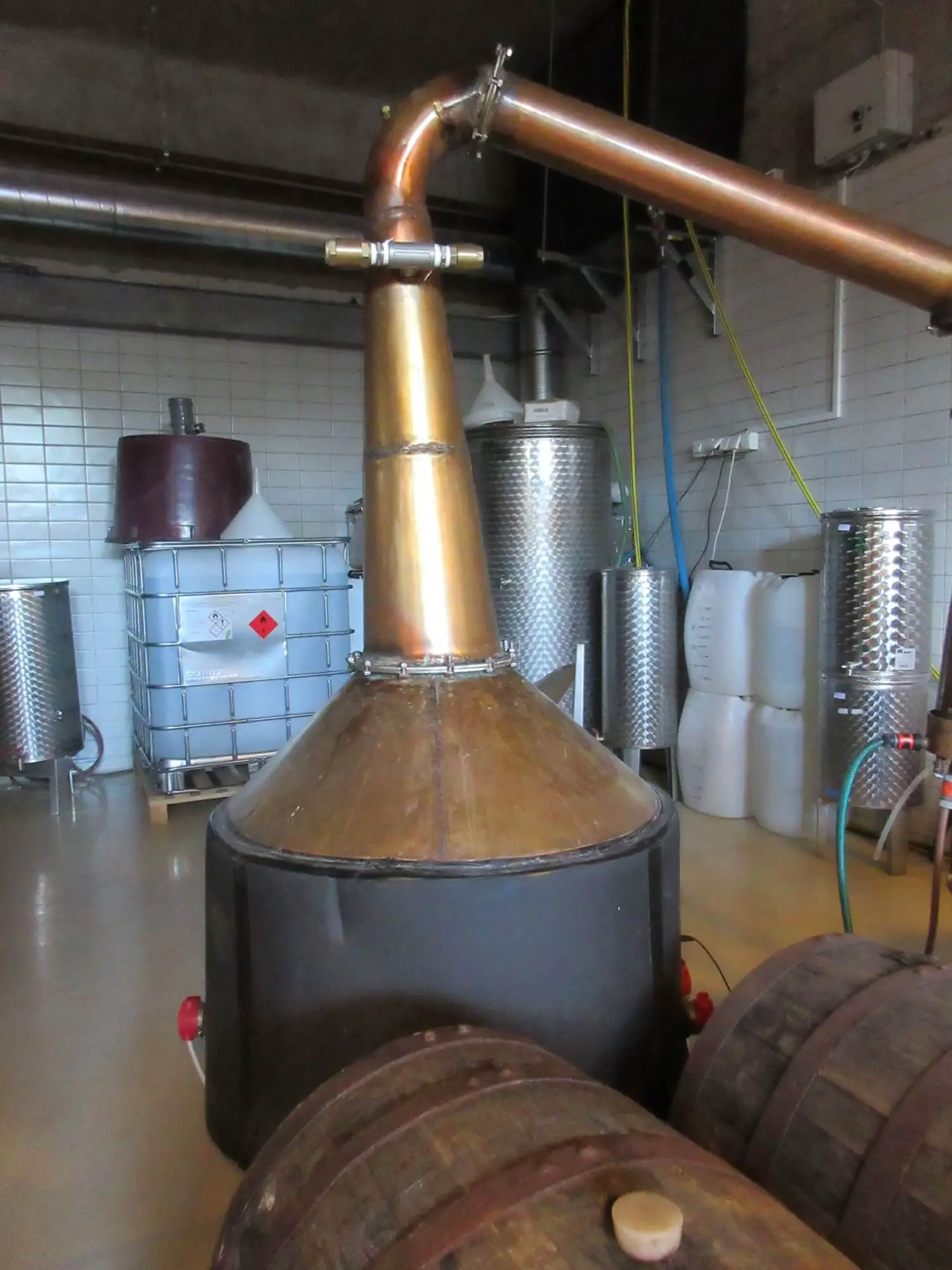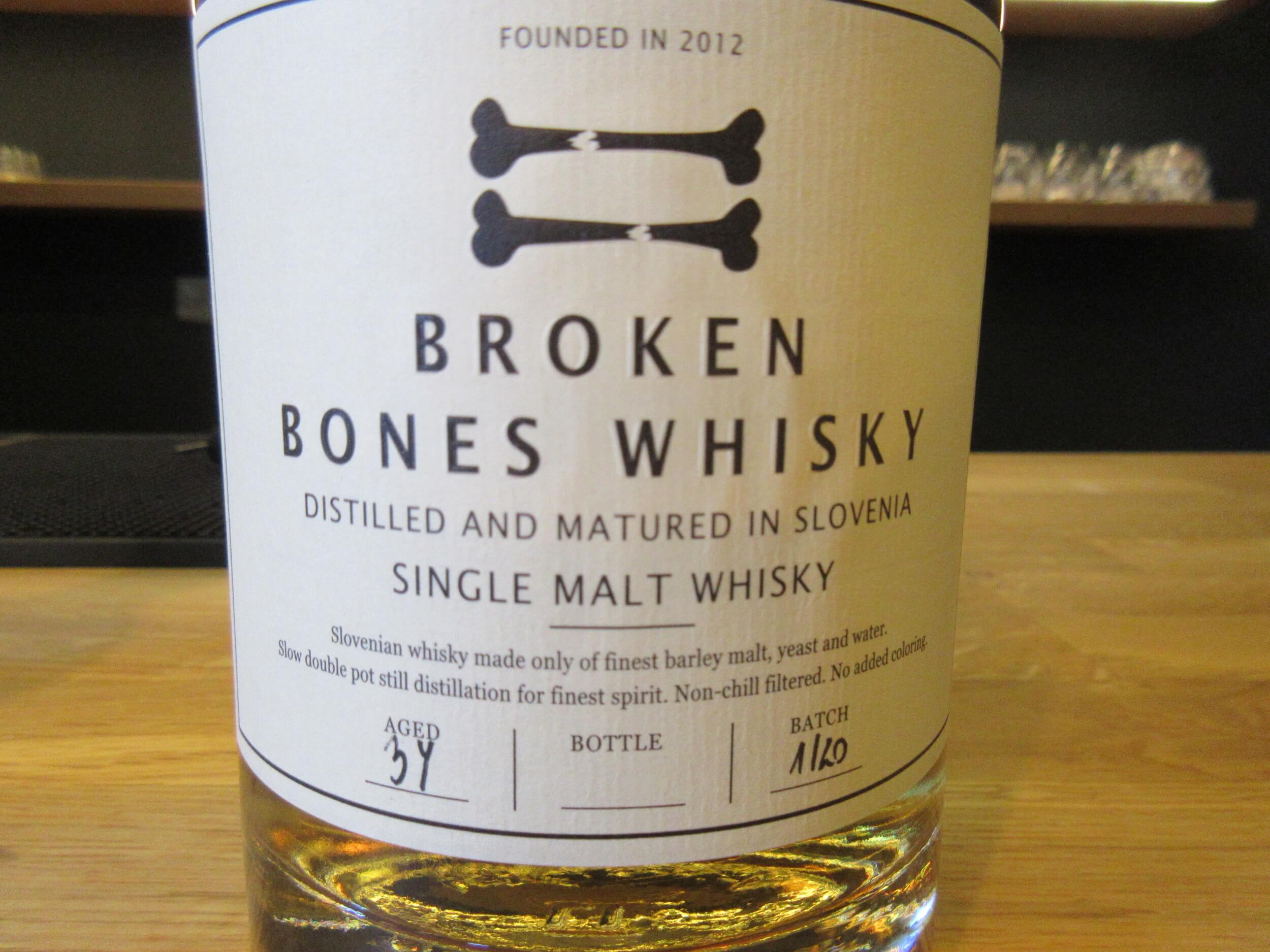Made in Slovenia
STA, 4 September 2020 - Slovenia's biggest star chef Ana Roš and publisher Beletrina have launched the Slovenian language version of Roš's personal monograph, called Sun and Rain (Sonce in Dež). Also available in English, this is the first book from the globally acclaimed chef, who said "writing it was akin to a psychoanalytical experience".
Roš, who was recently awarded two Michelin stars, said at Thursday's launch in Ljubljana that she felt few chefs had approached a book in a way that would reveal the key elements of cuisine.
"It is about the territory and the season, I will always promote that. What is meanwhile also very important is the chef's personality, just like is the case with sculptors, poets, writers, painters - you can provide them all with the same colours, stand and canvas, but each of them will create a different work," the Hiša Franko chef said.
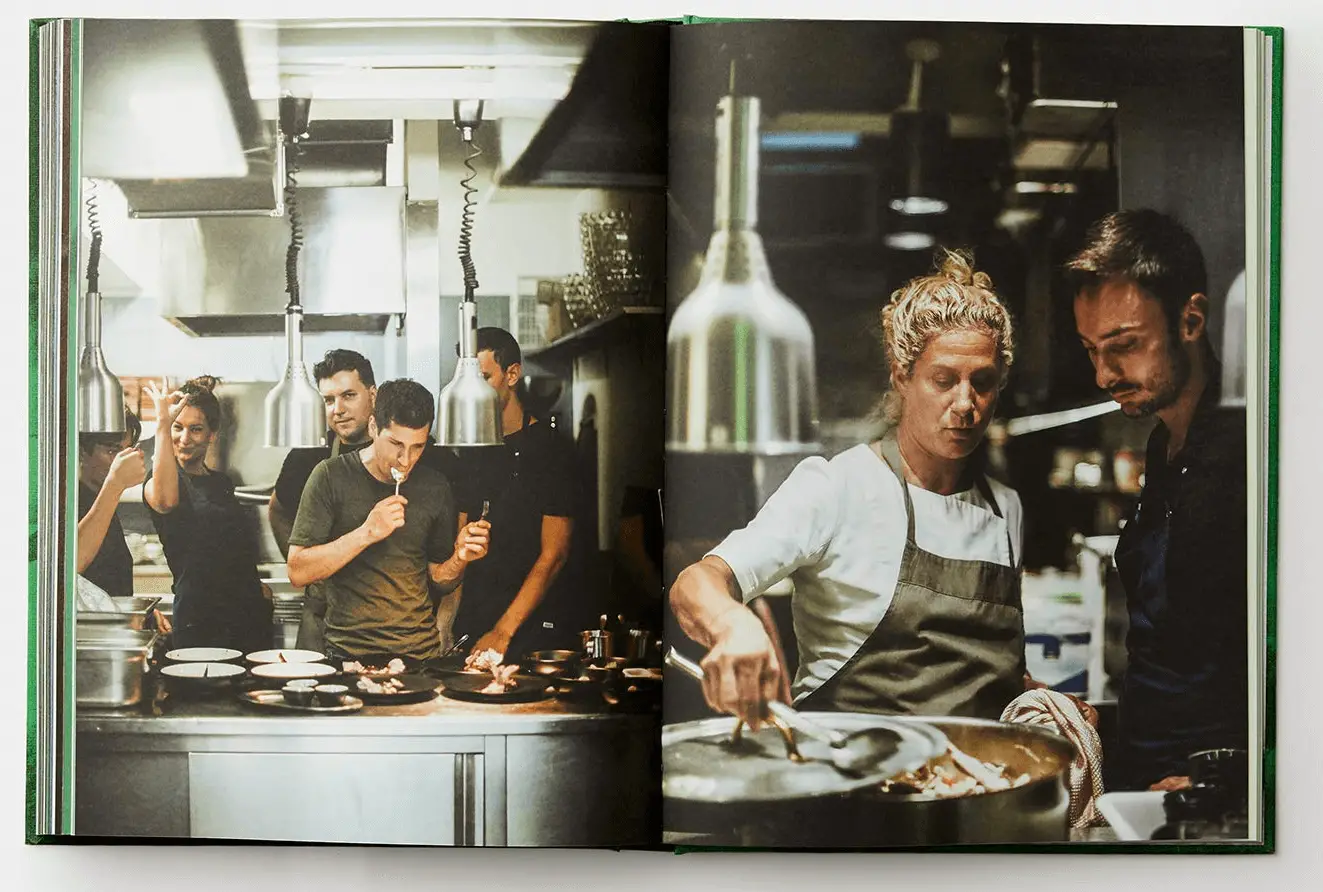
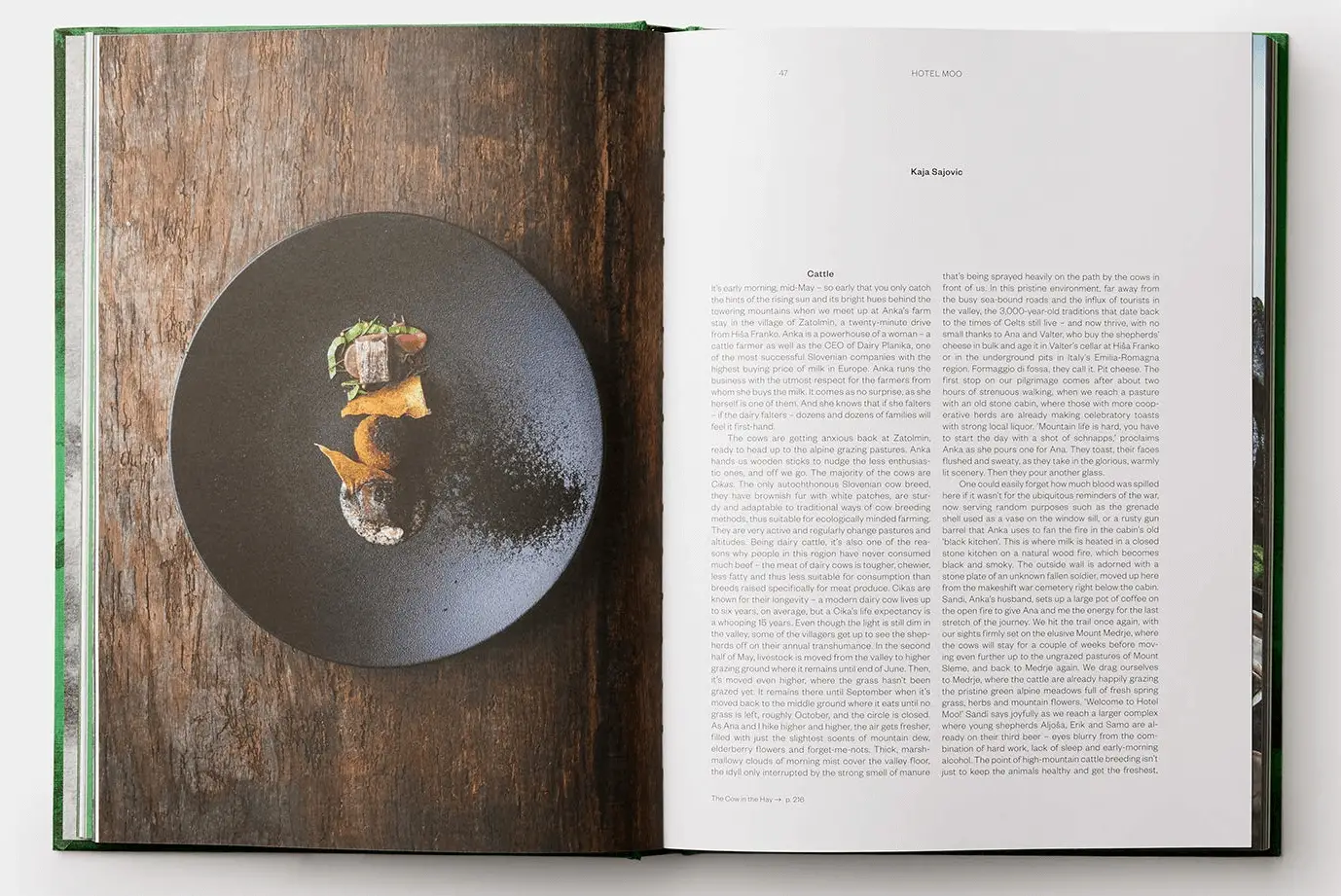
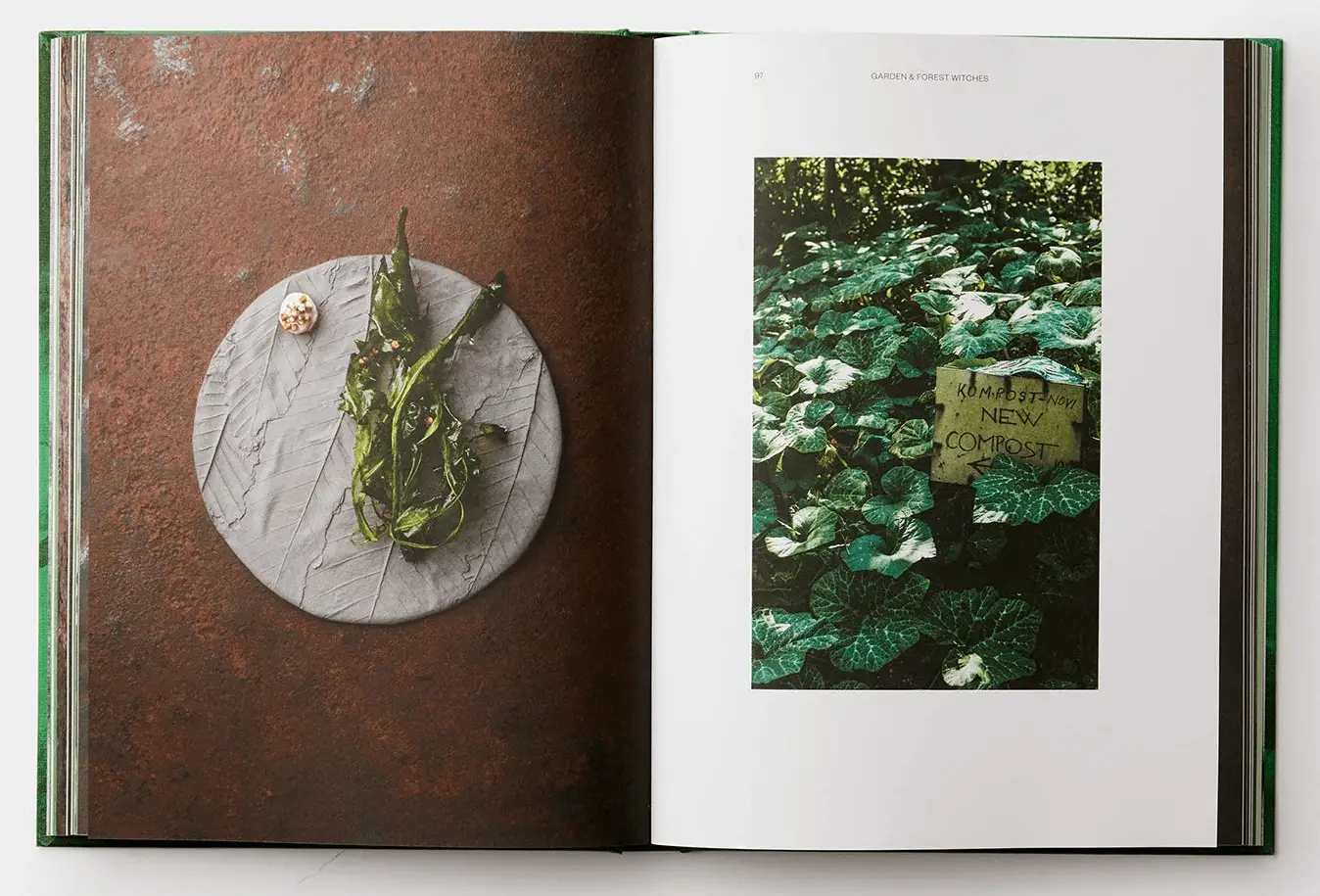
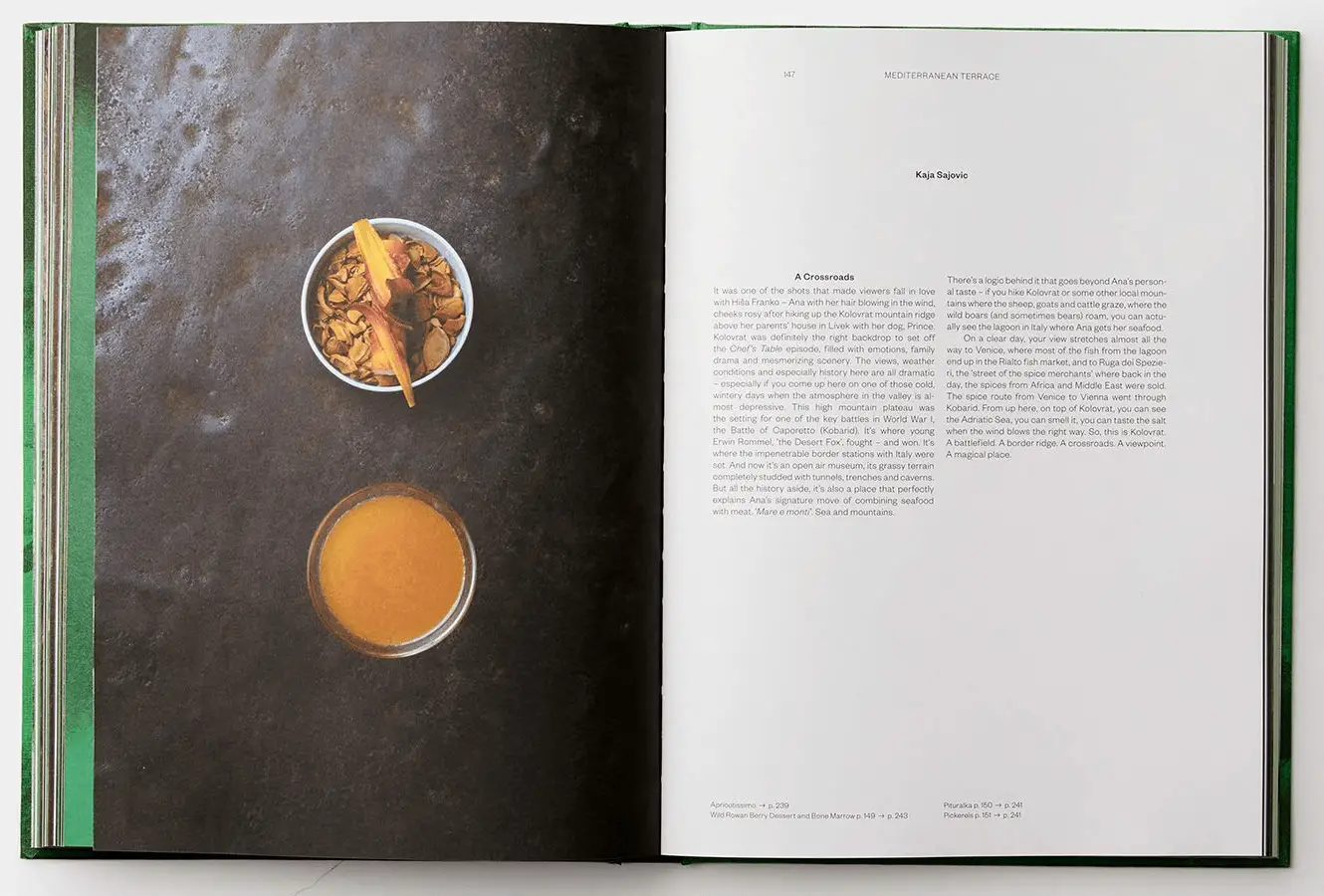
Roš, whose book includes contributions by journalist and translator Kaja Sajovic and 125 photos by Suzan Gabrijan, said Sun and Rain allowed clear insight into why she creates the way she does.
"Were I less truth-loving and dull, getting the essence of the book would be much harder," Roš said about the 256-page book, which was originally published in English by Phaidon.
"Read it, irrespective of the generation the reader belongs to, it will open a new perspective on somebody's work, while those dreaming of becoming a chef will definitely get a perspective on all the things that happen to an individual before they become truly formed," she added.
STA, 3 September 2020 - Following a number of cancellations due to poor weather, the launch of Slovenia's first satellites, Trisat and Nemo HD, as part of a project by the European space company Arianespace, was successfully executed this morning.
Arianespace's Vega rocket, which carried a record 53 satellites from 13 countries, was successfully launched from French Guiana at 3:51am CET.
Both Slovenian satellites, which are an important milestone for the country's as well as European space technology efforts, have already been placed in the orbit, with Nemo HD circulating at 515 kilometres and Trisat at 530 kilometres above Earth.
Their first contacts with stations in Ljubljana and Maribor are expected to be established at 10:43am and 10:50am, respectively.
The head of the Trisat project Iztok Kramberger of the Maribor Faculty of Electrical Engineering and Computer Science told the STA a group of researchers had gathered at the faculty to follow the launch that had gone very smoothly.
"We're happy that this first hurdle is beaten. But now the real work only starts, we're only at the beginning," Kramberger said about the 4.4 kilo nanosatellite that is capable of taking multispectral images of Earth in short-wave infrared spectrum with a camera unlike any other in space at the moment.
It will primarily bring insights about how robust this new space technology is, while its images could help monitor things like sea pollution with oil stains or plastics, major fires or volcanic ash in the atmosphere for the needs of the aviation industry.
The Nemo HD is a 65-kilo micro-satellite, which will be producing panchromatic and multispectral images and will be able to do so in an interactive fashion.
It was developed by the Ljubljana-based Centre of Excellence for Space Sciences and Technologies (SPACE-SI) and will for instance help monitor the Earth for agricultural, forestry, urbanistic and maritime transport purposes.
The Slovenian satellites are part of the first test of the Small Spacecraft Mission Service (SSMS) concept, which will allow larger number of satellites to be deployed in one go, meaning at a smaller cost.
Kramberger spoke of a confirmation that Slovenia focused on the right size and technology and "caught the right development wave".
SPACE-SI head Tomaž Rodič agrees: "It is above all a confirmation that our development strategy in the field of micro-satellites, drawn up over a decade ago, was right and allowed us to be part of a pioneering mission of the European Space Agency."
Amsterdam-based Slovenian astrophysicist Jure Japelj echoed this view as well, stressing that Trisat was built almost exclusively in Slovenia.
"Foreigners can notice this and in time this leads to bigger projects," said Japelj, while explaining the primary focus of the two satellites would for now be the testing of new technologies.
A response has also come from Minister of Economic Development and Technology Zdravko Počivalšek, who tweeted that "Slovenia has joined the group of countries with operative satellites in space, a top achievement that should make us extremely proud".
The Education, Science and Sport Ministry later joined the ministry in a statement welcoming the "exceptional success and achievement the launch of the satellites represent in the field of science and research."
President Borut Pahor also congratulated the Trisat team project and SPACE-SI for developing Nemo HD, "which has taken Slovenian scientific excellence to the stars".
The University of Maribor and SPACE-SI have confirmed that contacts had already been established with Nemo HD and Trisat, with both at around 10.45am.
The computer on Nemo HD is already up and running, while sensors are expected to be launched and calibrated in the course of three months, followed by technological demonstrations.
On Trisat, the first things to be checked are the status of batteries, solar panels, and later on, two-way communication and launch of the computer will be attempted. It could become fully operational in less than three months.
The University of Maribor added it was proud that the launch had finally been successful after more than a decade of development, and noted that the launch of a new satellite was planed for next year.
"The dream is not over. This is only a beginning," Kramberger told the press, with University Chancellor Zdravko Kačič adding that "it is a historic day ... with Slovenia becoming one of the countries capable of managing hi-tech which enables the launch of a satellite."
According to Kačič, the launch of the two satellites is an important step in the internationalisation of Slovenia's space industry, promotion of space engineering and encouraging international cooperation.
STA, 31 August 2020 - A team of researchers at the Ljubljana-based Chemistry Institute has developed a coronavirus vaccine that has produced a high immune response in mice. Tests have shown that the antibodies neutralise the virus just like with other vaccines and just like the antibodies in patients who have recovered from infection.
The team led by Roman Jerala, biochemist and synthetic biologist, has developed the vaccine based on the plasmid DNA that contains the code for the virus proteins and triggers the production of virus proteins in human cells. These respond by creating anti-bodies and the protective T cells, Jerala told the press today.
He said different coronavirus vaccines based on the plasmid DNA were already being tested in clinical reasearch in the US, Japan and South Korea.
The advantages of such vaccines are low costs of production and high stability, also outside freezers, while their downside is that they cannot enter cells as efficiently as viruses.
But Jerala's team has overcome this problem by modifying the virus's proteins into nano parts that are reminiscent of viruses, which improves the response of the immune system.
The team has prepared five varieties of the virus's receptor binding domain (RBD) that is in charge of recognising the cell's receptor.
Tests in mice have shown the best performing variety of the vaccine was the one where a short segment was added to the virus protein to trigger the production of large clusters.
In that case, the response was a hundred times better than that of the monomer protein used in some other vaccines.
The tests have shown that the anti-bodies neutralise the virus's attachment to the human receptor in concentrations that are comparable to other vaccines and the anti-bodies in patients that have recovered from an infection.
Moreover, T cells were produced, which destroy the cells producing virus proteins.
Jerala stressed though that these were only pre-clinical studies, and that the path to the actual use of the vaccine was still long. Comprehensive clinical studies would need to be conducted on humans before it could be used widely, he said, noting that developing the vaccine further would made no sense if another safe and efficient vaccine was made available soon.
Nevertheless, a consortium of researchers from the Veterinary Faculty, Faculty of Pharmacy, the infectious disease clinic of the UKC Ljubljana hospital and the Golnik clinic joined by the company Jafral will continue to work towards preparing the vaccine for clinical studies.
Borut Štrukelj from the Faculty of Pharmacy said this vaccine should definitely be developed further, especially as other vaccines being developed at the moment might not prove to be safe or effective in the long run.
Štrukelj also noted that the vaccine had been developed with ten or hundred times less funds than such projects receive in the US or China.
The article on the preclinical studies is currently available at is https://www.biorxiv.org/content/10.1101/2020.08.28.244269v1. The team will also present its results to the European Medicines Agency.
If the agency responds quickly, clinical studies on humans could start in December, Štrukelj said.
Jerala estimates that enough vaccine for the entire Slovenia could be produced in an industrial fermenter in a week provided that the procedure is optimised.
STA, 26 August 2020 - Boris Pahor, an acclaimed Slovenian writer from Italy's Trieste, a Nazi camp survivor and an outspoken fighter against all totalitarianisms, turned 107 today. While only last year he still attended a special event celebrating his birthday, an online event will be organised this year due to his health concerns.
In a video posted by the Ljubljana-based publisher Mladinska Knjiga, Pahor points to the three main postulates for the 21st century - freedom, justice and truth.
"Freedom - because God created man and wanted him free. Also the Holy Scripture, at the beginning of the Old Testament, says that he wanted him free. He could have made him not free.
"Justice - because man has to adhere to what is true, right and necessary. It is right that every man have enough food and income, for himself and for the children."
The third postulate is truth in the sense that everyone must know what is going on, said Pahor, stressing that the truth must not be kept secret.
Asked about the stamina he has at 107, Pahor said he had inherited it from his father, a very able-bodied man, while his mum had also been quite active.
"Then there is also the conviction that being a camp survivor, I have to be a witness to truth. My stubbornness that I have to speak about Nazism as best and as objectively as possible was born in the book Necropolis."
When this autobiographical novel was first published in Slovenian in 1967, it was largely overlooked, but in 1990 it was translated into French to critical acclaim.
The novel has since been translated into many languages, and was also declared the book of the year in Italy in 2008.
Necropolis starts with Pahor's visit to the memorial at the Natzweiler-Struthof concentration camp, also bringing an account of his imprisonment at the other concentrations camps - Dachau, Dora, Harzungen and Bergen-Belsen.
Pahor, who was also a strong opponent of the communist regime in Yugoslavia, has dedicated his life to highlighting the dangers of totalitarian regimes.
A fighter for the rights of endangered languages and cultures, himself being a member of the Slovenian minority in Italy, he often speaks about the need to know history and to honour one's identity.
You can watch the full documentary here
The writer believes that being aware of their national identity is key for Slovenians to survive as an ethnic community in Italy and for humanity in the world.
As a child just before he turned seven, Pahor saw the Slovenian National Hall in Trieste being burnt down by Fascists in 1920.
When the centre was finally symbolically returned to the Slovenian minority on 13 July this year, he received Italy and Slovenia's highest national honours.
Slovenia decorated him for his extraordinary merit in enhancing understanding and integration among nations in Europe and in his relentless promotion of Slovenian identity and democracy. Italy decorated him with the Knight of the Great Cross order of merit.
Despite his initial reluctance to accept the orders of merit, he decided to accept them and dedicate them to all those who had died in concentration camps.
STA, 17 August 2020 - A lung transplant was performed over the Saturday night in the UKC Ljubljana hospital on a 14-year-old girl with cystic fibrosis, in what was the first lung transplant in a child in Slovenia's main medical centre.
The girl started breathing on her own with the new lungs already on the following day and she feels well, UKC Ljubljana said on Monday.
At the same time, a heart transplant was performed on a 15-year-old boy, which has also been successful, said Tomaž Štupnik, the head of the hospital's ward for thoracic surgery.
After the surgery, which involved a team of 20 doctors and nurses, the girl is expected to stay in hospital for two weeks under the optimal scenario. She is expected to return to living normally in a few months.
"With one surgery, a child who barely breathed before the transplant ... and whose quality of life was poor and who was psychologically at the bottom, turned into a practically normal girl who laughs, breathes and is much more lively."
Štupnik noted that it was harder to prepare a child for lung transplant because the team needed to also cooperate with the parents, and lungs of an appropriate size needed to be found.
What is more, the complexity of the surgery in the case of cystic fibrosis is higher because of the infection in the thorax, and the possibility of complications after the transplant is also higher.
Since UKC Ljubljana started performing lung transplants less than two years ago, 23 persons got new lungs, and the number of transplants in 2019 placed Slovenia 16th in the world in terms of lung transplants per million people.
STA, 17 August 2020 - A study has shown that an endangered subspecies of the common dolphin visited the Gulf of Trieste, which includes the bulk of Slovenian territorial waters, between 2009 and 2012, after a long period of absence due to systematic culling and lack of food.
The marine mammal association Morigenos, which conducted the study, notes that the appearances of the subspecies in the Adriatic Sea and the Mediterranean used to be something completely usual.
But since the 1970s, it has become so rare that it was labelled as endangered by the International Union for Conservation of Nature (IUCN).
According to the association, this was most probably owing to deliberate and systematic killing of the animal in the mid-1950s.
"At the time, Italy and the former Yugoslavia were paying rewards for each dolphin killed, because they were treated as pests who compete for fish with the fisheries sector," Morigenos said in a press release on Monday.
An additional possible cause for the decline of its population was the lack of food due to over-fishing and overall degradation of the marine environment.
Related: Slovenian Team Finds Dolphins Sharing Bay Based on Time, Not Space
While the last large groups of the common dolphin were seen in the Gulf of Trieste in the 1940s, Morigenos has come up with some new findings based on direct observations and found carcasses.
The association has established by means of photo identification of the dorsal fin that at least four specimens appeared in Slovenian territorial waters between 2009 and 2012.
While the common bottlenose dolphin is constantly present in the Gulf of Trieste, the common dolphin remains a rare species in the Northern Adriatic and chances for its return in large numbers are rather slim.
"Researchers record no increase in the number or sightings anywhere in the Mediterranean," said Morigenos, which hopes the study will encourage reporting on future cases to get better insight in the occurrence of the common dolphin in the Adriatic Sea.
"Large marine predators are important for healthy ecosystems and in the long run they are beneficial for the fisheries sector and not harmful," the association concluded.
You can learn more about the work of Morigenos here, and also read the full study, Occurrence of common dolphins (Delphinus delphis) in the Gulf of Trieste and the northern Adriatic Sea, by Tilen Genov, Polona Kotnjek and Tina Centrih
STA, 3 August 2020 - During the past few years public orchards have been planted across Ljubljana in the desire to make fruit available to locals from midsummer to autumn and create a pleasant environment for bees. Alas, the orchards have often been a target of vandalism and are not thriving as planned, according to the city.
Most of the orchards were planted near urban community gardens in Ljubljana, however the process has been slowed down due to vandalism. The city authorities will carry on planning and planting the orchards when the existing trees are old enough to bear fruit.
The orchards were meant to be venues promoting food self-sufficiency and for educational activities, for example pruning workshops.
The first orchard was created in autumn 2015, featuring 128 trees, only to be vandalised three times in 2016. No saplings survived the incidents unscathed. Young trees in most of the orchards are not developing as planned due to acts of vandalism, said the city.
The saplings are either uprooted and stolen or damaged. Ljubljana has replaced all the missing or broken saplings and reported the damage to the police, but the perpetrators remain unknown.
Last year and this year so far no saplings were hurt as the city imposed deterrent measures, including traffic warden patrols and campaigns raising awareness about the need to respect public space.
A total of some 600 fruit-bearing trees have been planted in Ljubljana so far, most notably trees producing apples, pears, plums, but also rarer types of fruit, such as persimmons, medlars, and quinces.
The trees will require a few years to develop their final size and bear fruit, but they are also hardier than those in modern orchards and need no support.
STA, 3 August 2020 - Drago Jančar, arguably Slovenia's leading contemporary writer, will formally receive on Monday the Austrian State Prize for European Literature 2020. The life-time achievement award is awarded to writers with a strong international presence.
"Taking an individual to penetratingly render understandable the delusions of our history: this is one of the big strengths of his literature," the jury wrote about the 71-year-old.
Jančar is well known in the German-speaking world and a number of his works have been translated into the German, among them the 2017 novel And Love Itself (In Ljubezen tudi)
His works often deal with individual's struggles with society and some delve into post-WWII events in Slovenia, a source of many present-day political fault lines.
Jančar, a novelist, playwright and essayist, is the most widely translated Slovenian writer and has received an unparalleled number of awards in Slovenia and abroad.
He has written eleven novels; one of the most celebrated ones, I Saw Her That Night (To Noč Sem Jo Videl; 2010) has been translated into at least ten languages.
He is the only Slovenian writer to have won the prestigious Slovenian Kresnik Prize for the best novel of the year four times, most recently with And Love Itself in 2018.
The Austrian State Prize for European Literature is handed out annually for the oeuvre of a European author that has won international acclaim and has been translated into German.
Some of the previous winners include French writer Michel Houellebecq (2019), English novelist Zadie Smith (2018) and Nobel laureate Patrick Modiano (2012).
STA, 29 July 2020 - Renoir, an advanced article-tracking tool developed by the Slovenian Press Agency (STA), has made the European Commission's list of the best European innovations as part of the Innovation Radar platform.
Innovation Radar is a European Commission initiative to identify high potential innovations and innovators in the EU-funded research and innovation framework programmes.
The platform, available at the web address https://www.innoradar.eu/, features around 3,600 top innovations whose excellence and potential has been recognised by independent experts.
The goal is to present to European public technological and scientific achievements supported by the EU funds, while also making it easier to the authors of innovations in looking for new opportunities or partners.
As part of the innovation and research project Renoir, co-financed within the Horizon 2020 programme, the STA has developed a prototype solution for tracking of articles in cooperation with international partners.
The prototype has been upgraded into an independently operating web application, called NewsMapper, which is available at the web address https://newsmapper.sta.si/.
The application is based on artificial intelligence technology and allows a series of functionalities, including machine tracking of the use of articles on the internet and early detection of new topical stories, both in real time.
NewsMapper, with which the STA targets foreign markets, makes the work easier to journalists, editors and marketing and sales divisions of media outlets.
At the same time, it is also useful to business users from non-media industries who are interested in the movement of their press releases in the media space, and related advanced analyses.
Broken Bones (BB), the Ljubljana-based distillery that recently took home the title best gin in Europe have finally released their first whisky. The finally is because BB was started with the aim of making whisky, but the process takes so long that they started working on gin while the first batch was still waiting in the barrel. Now, 3 years later and the name Broken Bones already synonymous with small batch gin (available online, at the distillery the company and a few select bars and restaurants) has achieved it’s first aim – to produce a top-quality whisky in Slovenia.

It’s a Scottish style whisky aged in oak, first in Slovenian barrels, then finished in used bourbon oak barrels from the US. Time and this process transforms Slovenian water, barley, yeast and air Into the rich flavours of a whisky for sipping and slowly enjoying.
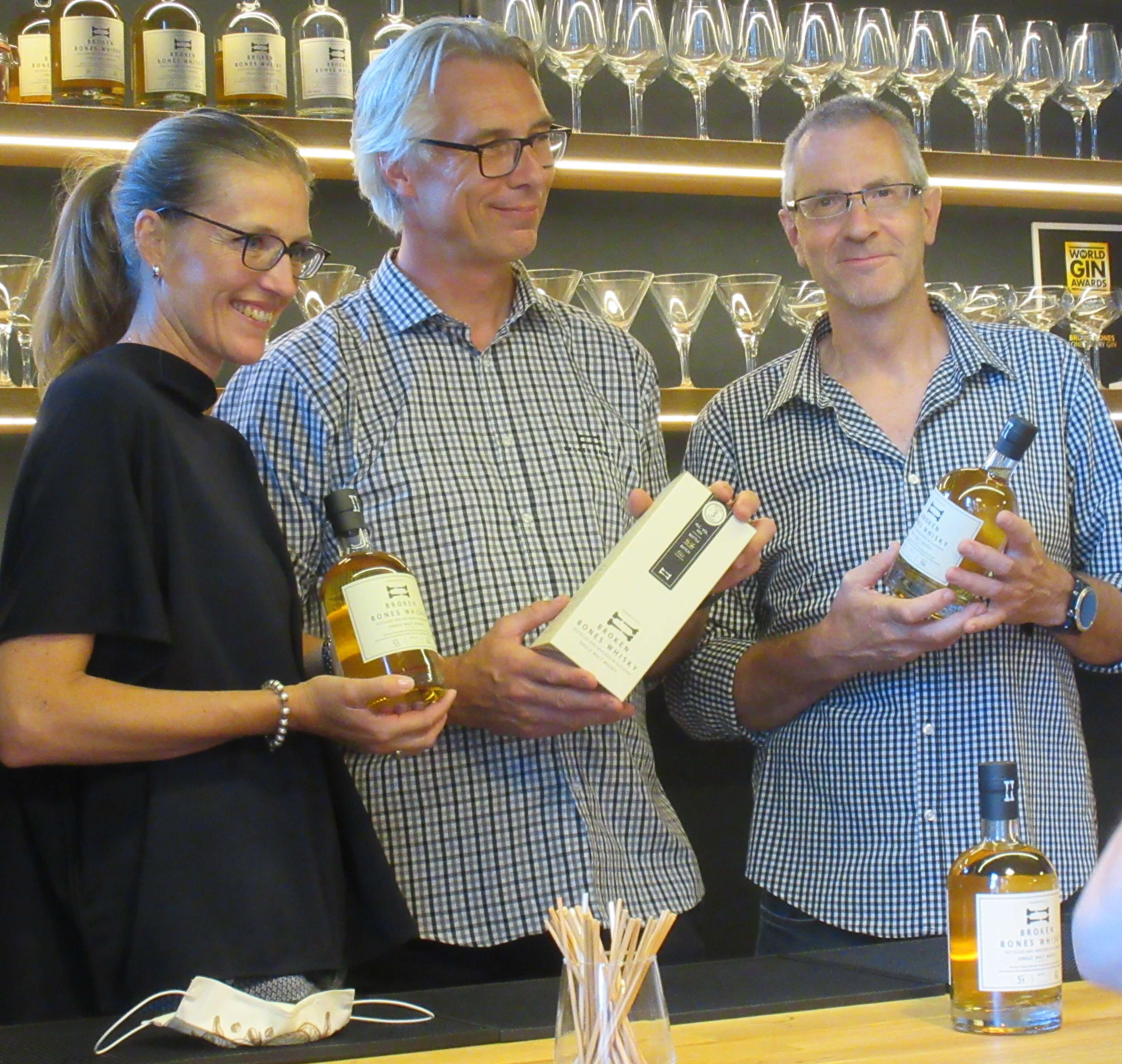
Polona, Borut & Boštjan. Photo: JL Flanner
We’ve covered the BB origin story before, but in short the broken bones refer to the accidents that befell the other BB at the distillery – Boštjan Marušič, a computer scientist, and Borut Osojnik, a professor of philosophy – when starting the business. The team is rounded out by the third co-founder, Polona Preskar, responsible for sales and marketing.
The still. Photo: JL Flanner
While gin can be produced in a matter of weeks, whisky takes time, and the colourless 70% alcohol new make needs at least a year in the barrel before it can even legally called whisky. Beyond a year, whisky can be kept as long in the barrel as people are able to resist drinking or selling it.
This whisky is only the start of the story. At the end of the year the second batch will be released, a peated whisky that I sampled. It tasted like an Islay, and is something to look forward to. From then on the plan is to release a new small batch twice a year, expanding production along with the market.
The whisky is a premium product, at €155 a bottle, and not intended for use with shot glasses or Coke. It’s for whisky lovers who enjoy collecting the rare and curious – with this batch available in a limited edition of 66 – and those interested in following the progression and development of BB whisky, with the peated version due in December, and the 4th year batch next summer.
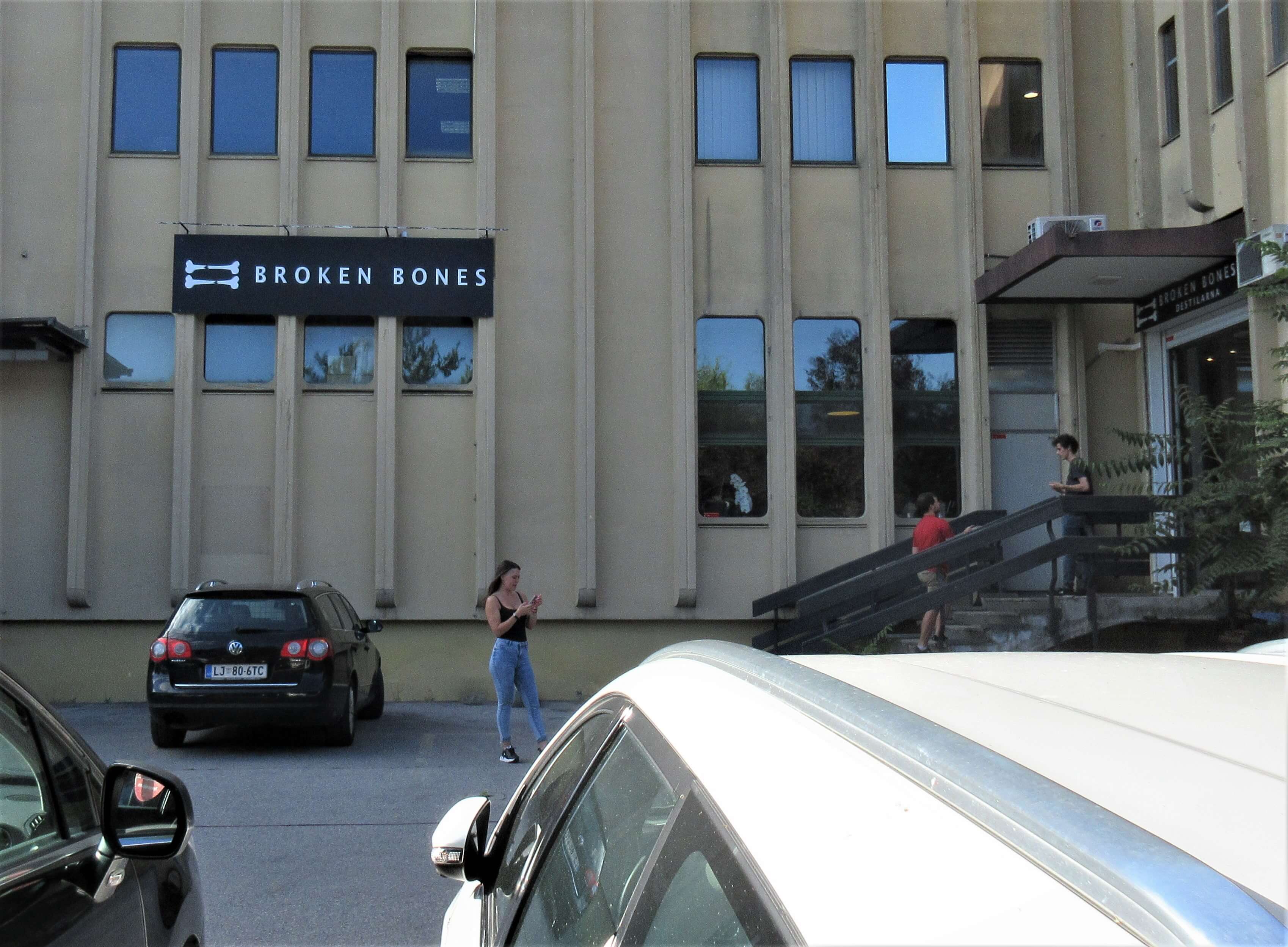
The distillery is not far from the centre of town, and on the bus and train routes. Photo: JL Flanner
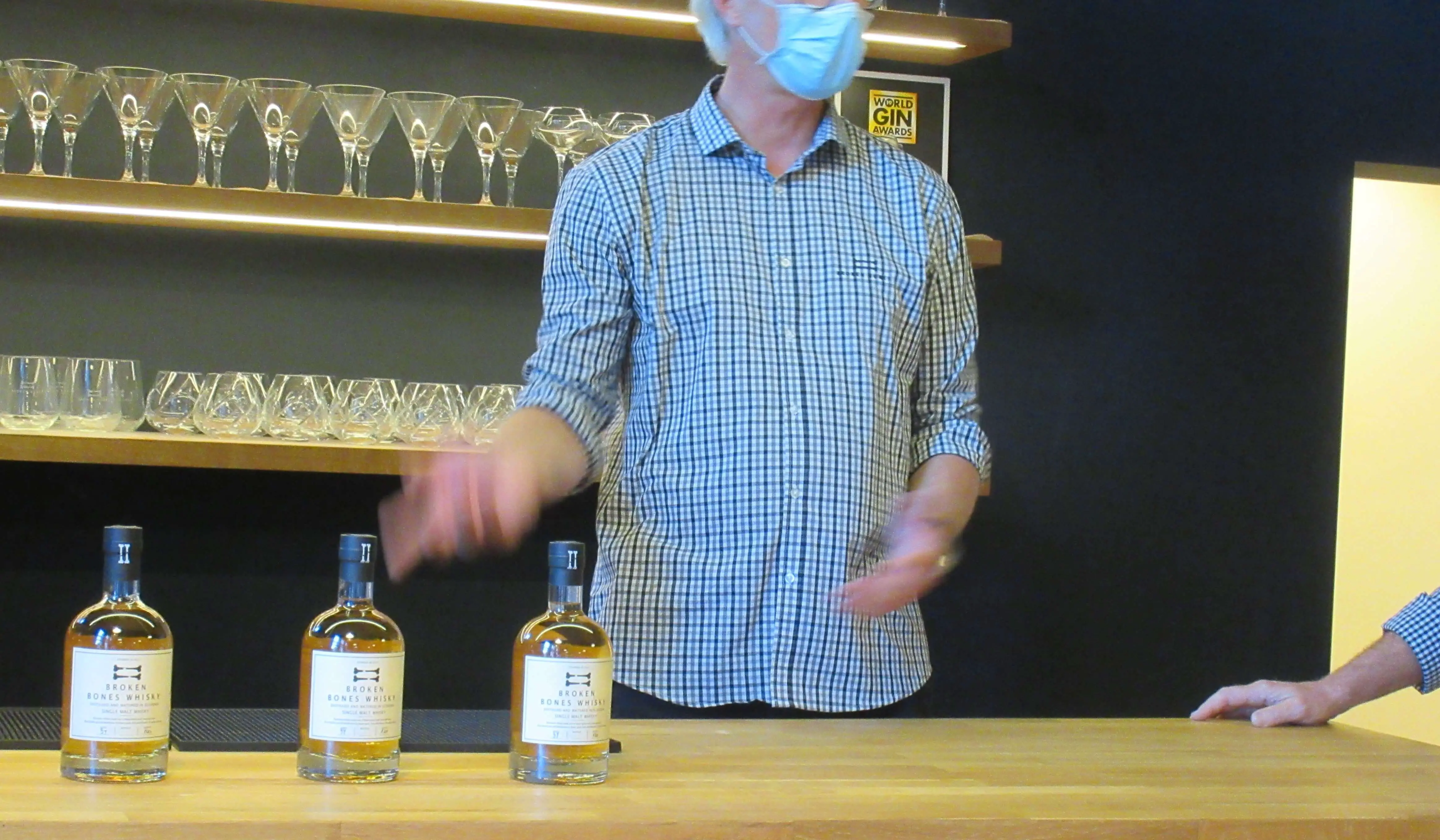
The whisky was launched with full social distancing and safety measures. Photo: JL Flanner
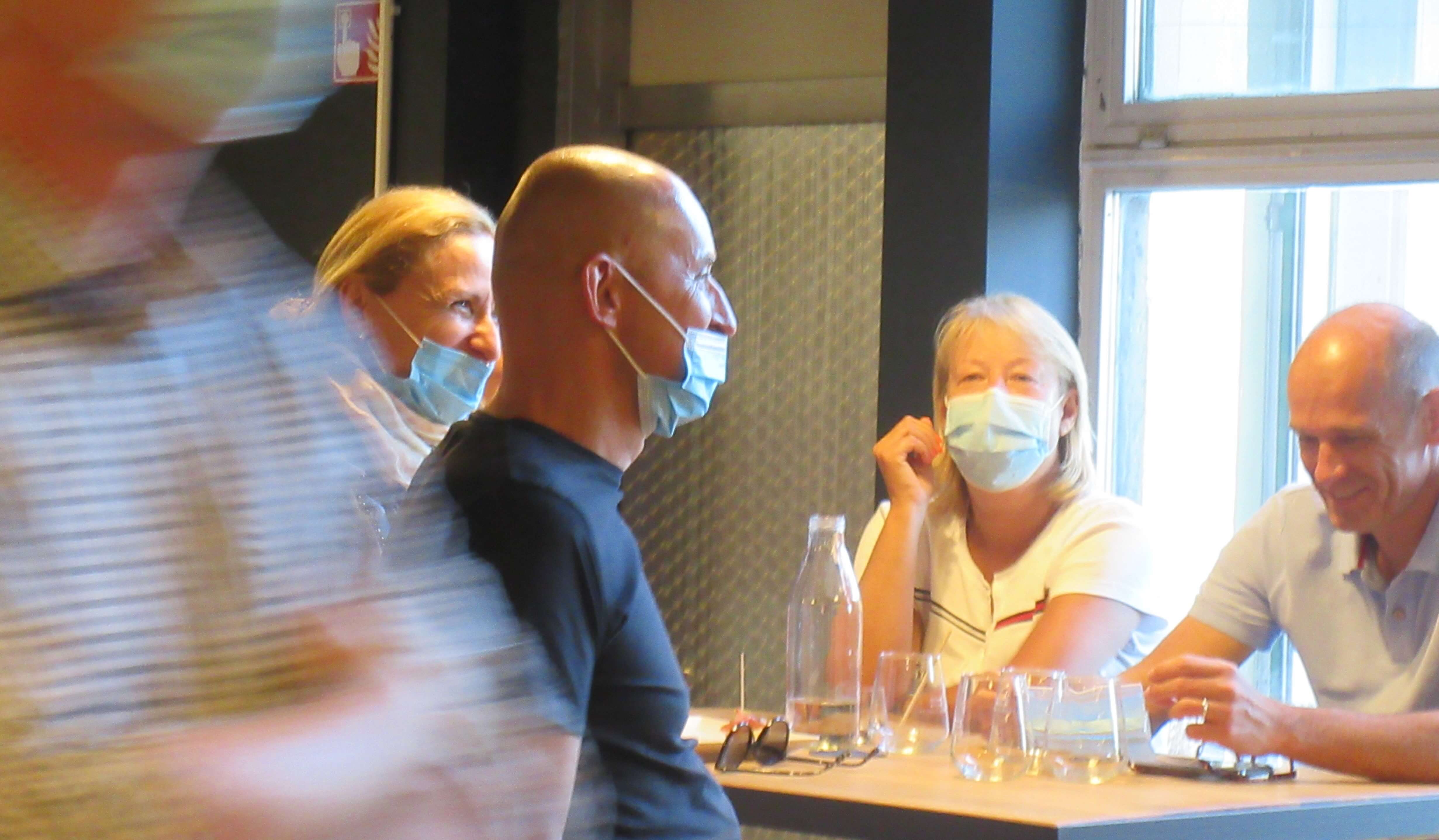
Due to the limited production run the whisky will not be available in bars or stores, and can be bought exclusively through Broken Bone’s website or on a visit to the distillery.
Na zdravje!
The pandemic put everything on hold for a few months, and one of the events that was cancelled was the Spring Soiree, in which the SILA-IWCL (International Women's Club Ljubljana) gathers to raise money for a good cause.
To replace it the organization has joined forced with the French Embassy in Ljubljana to put the spotlight on a campaign to help furnish a new Safe House in Novo Mesto that welcomes women and children victims of domestic violence. Until the end of July you can donate money to the Safe House via SILA IWCL’s account:
Sberbank, IBAN SI56 3000 0010 4338280, SWIFT/BIC code SABRSI2X
Learn more about the project on SILA’s website, and follow the various events and opportunities that the group organizes on Facebook.
Domestic violence in Slovenia
Research shows that domestic violence remains a common problem in Slovenian, and there were fears of a surge in incidence during the lockdown. The latest study, carried out post-corona, is from the IPES Institut (Inštitut za proučevanje enakosti spolov, the Gender Equality Research Institute), titled “The atmosphere in intimate-partner relationships and families in times of quarantine and insecurity”.
It examined issues around domestic violence with data from 700+ anonymous and online surveys, completed from all of Slovenia’s statistical regions. More specifically, the study looked at: 1) the general understanding of gender-related roles in relationships (the persistence of gender stereotyping); 2) actual lockdown experience (the underside of the idealized family image); 3) coping with distress.
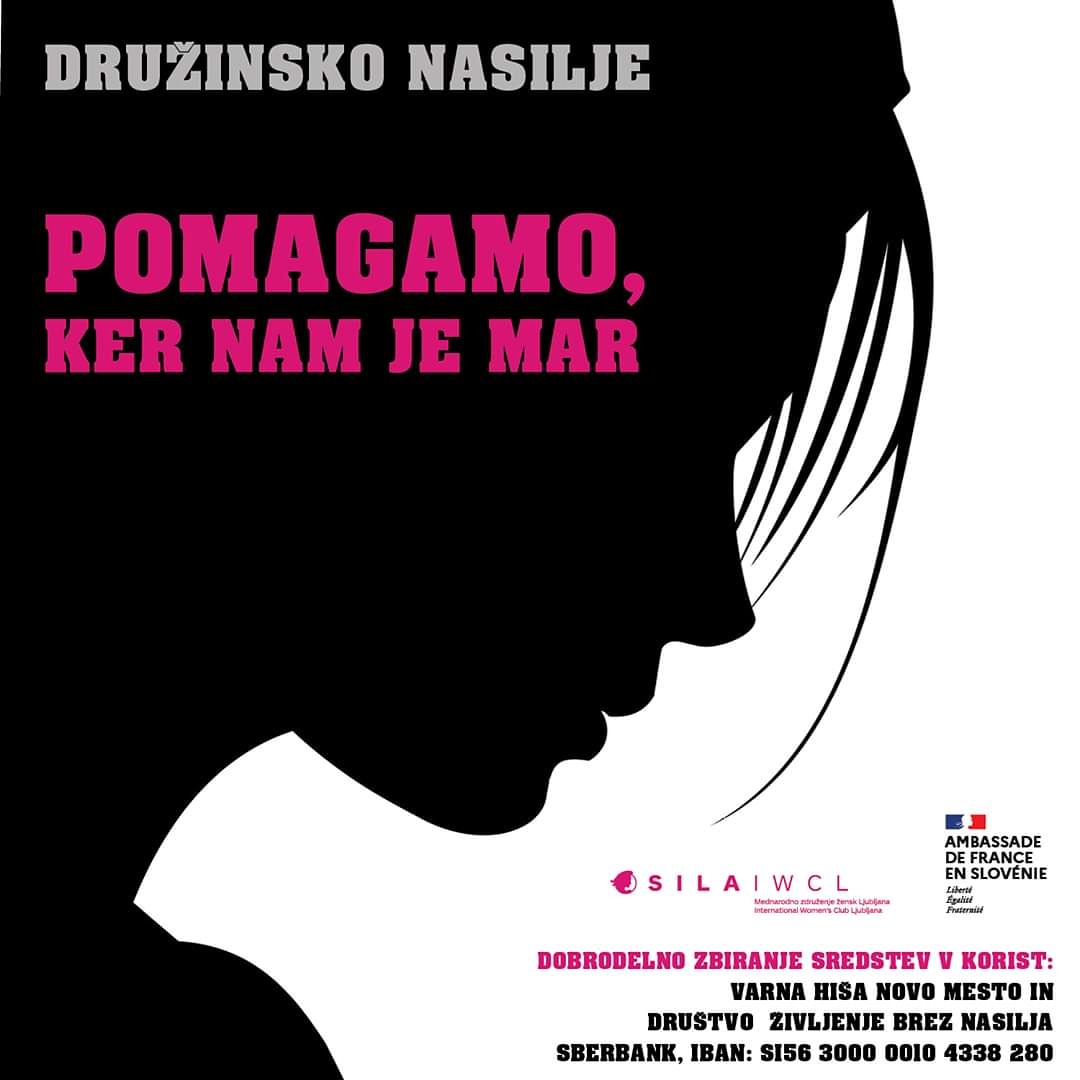
The results show a high prevalence of intimate partner abuse, made worse by the pressures and confinement of lockdown. The abstract highlights the following findings:
- · 34.7% of men and 18% of women did not agree with the statement that the perpetrator is always responsible and guilty for an act of violence.
- · 30% of respondents believed that in times of crisis women work to should calm conflicts, calm potentially stressful situations and relationships and not raise their own problems.
- · Just 11% of respondents stated they will have fond memories of the weeks in isolation, as they loved being at home.
- · 5% of respondents think that violence is sometimes justified, while a further 10% neither agree nor disagree with this statement.
- · 35% of the respondents believe that it is right for women to do most of the housework at home.
- · 15% of women answered that the corona crisis further increased their financial dependence on their partners.
- · 85% of respondents did not talk to anyone about their concerns during the lockdown.


